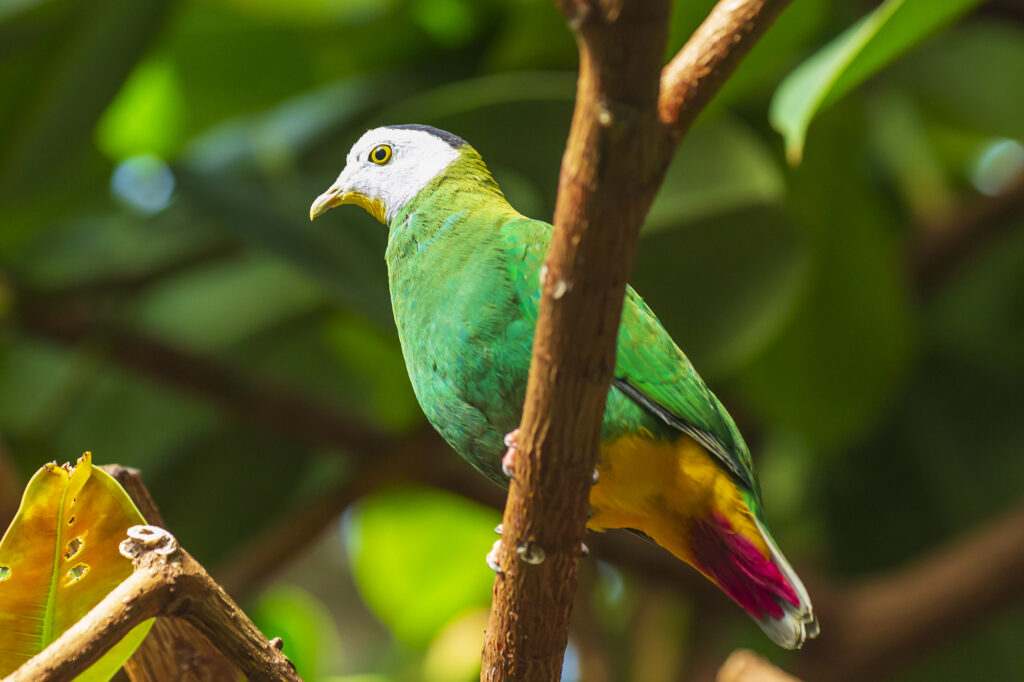Pigeons: people seem to either love them or hate them!
The Audubon Society explains that humans have “waged war” on pigeons for over a hundred years, especially in cities. They write, “Around the world, we’ve criminalized feeding pigeons, shot them, poisoned them, trapped them, zapped them, fed them birth control, and used all manner of repellants—from plastic birds of prey to spike strips—to keep these ‘rats with wings’ off of sidewalks, statues, and buildings.”
Yikes! Are pigeons really that bad?
Let’s look at what makes a pigeon a pigeon–and then we’ll look at the bird species that look a lot like them!
What Is a Pigeon?
Most of the time, when someone refers to a bird as a pigeon, they’re referring to a rock dove or a rock pigeon. The names are interchangeable!
Rock doves are inconsistently colored but have mostly blue-grey feathers, two black bands across their wings, and a black-tipped tail. Their feathers have an iridescent sheen, especially on their necks.
Sometimes, their color can vary significantly. There are all-white rock pigeons and variants that are mostly red or black. These species of birds prefer living on agricultural land.
Pigeons live in large flocks. They spend their time walking in large groups, looking for food on the ground. This is common in cities, towns, and fields, but they live on rocky cliffs.
They like to nest in the crags of the cliffs and create similar nests in cities, building nests under eaves, rain gutters, and abandoned stairwells. These delicate birds may have dark feathers and are the largest ranges.
Are Pigeons All Over the World the Same?
Rock pigeons live all over the world, but not all pigeons are rock pigeons. In fact, there are 351 recognized pigeon species globally!
What Kinds of Pigeons Are Most Common in the World?
Here is a table with the 10 most common pigeons and where they are found!
| Type of Pigeon | Where the Pigeon Lives | |
| 1 | Rock dove | Lives worldwide |
| 2 | Hill pigeon | Lives in China, the Himalayas, and Central Asia |
| 3 | Snow pigeon | Lives in Altay, Tian Shan, the Himalayas, and Central China |
| 4 | Speckled pigeon | Lives in Sub-Saharan Africa |
| 5 | White-collared Pigeon | Lives in Eritrea and Ethiopia |
| 6 | Stock dove | Lives in Europe and Central Asia |
| 7 | Yellow-eyed pigeon | Lives in Central Asia and Western China |
| 8 | Somali pigeon | Lives in Northeastern Somalia |
| 9 | Common wood pigeon | Lives from Europe to China |
| 10 | Trocaz pigeon | Lives in Madeira, Portugal |
A List of Other Birds That Look Like Pigeons
Let’s put together a list of more than 20 birds that look like pigeons! These may not be mixed up with the incredibly familiar-looking rock pigeon, but there are enough shared features to take note of the similarities!
African Collared Dove

The African collared dove lives across Central Africa, but there are also rare sightings of these birds in North America. Suppose you see an African-collared dove in North America.
In that case, it is probably a domesticated pet bird that has escaped or is part of a feral community descended from escaped pet birds. These birds need constant food sources and prefer living on deciduous trees, specifically flat tree limbs.
Males and females look the same. They have whiteish bodies and heads and a black half-collar around their necks. That’s where they get their name. The outstretched wings mostly occupy the female body mass.
Band-Tailed Pigeon
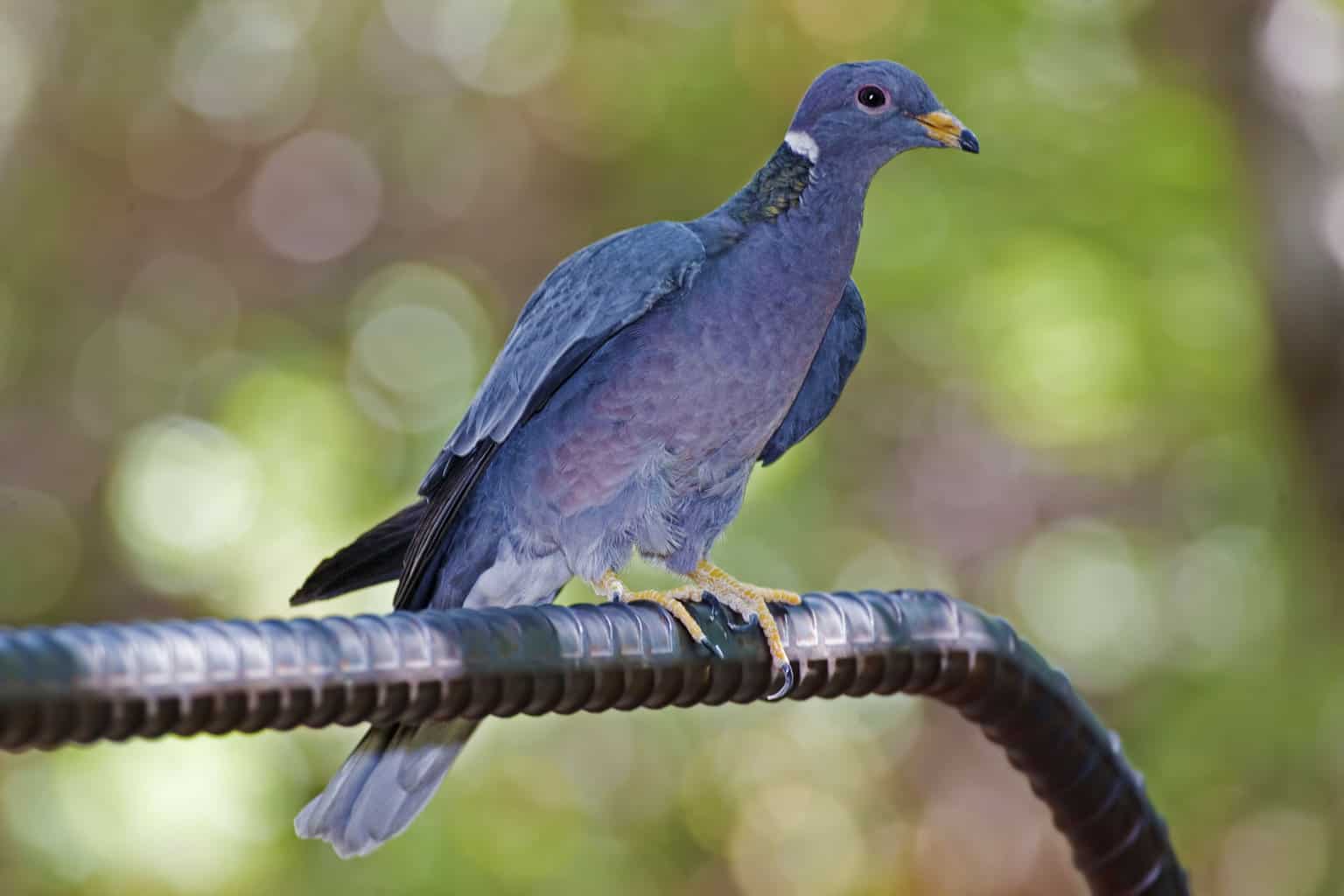
Band-tailed pigeons are related to rock doves. They live along the Pacific Coast, Southwest Coast, and west coast of Mexico, mostly in the forested territory.
Like their rock dove cousins, they live in large flocks. However, they are less likely to live in cities and populated areas. They are common visitors to bird feeders, berry bushes, and fruit orchards.
They are very similar to rock doves, usually blueish-gray or purplish. On the back of the neck, they have a white crescent shape. Instead of a black-tipped tail, band-tailed pigeons have a grey band across the tip of the tail.
Beautiful Fruit Dove
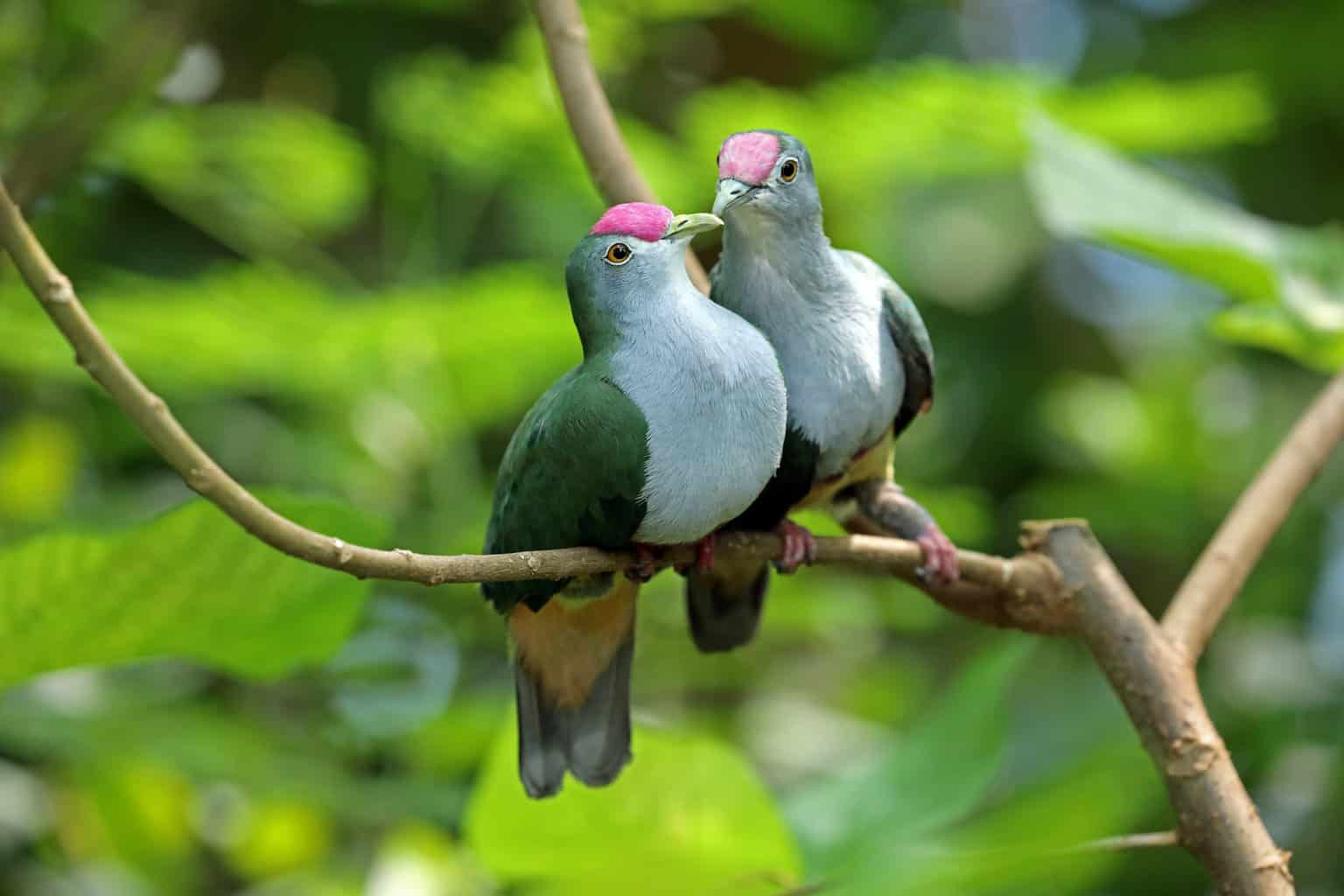
The beautiful fruit dove definitely earns its name! Its body coloration is segmented: a bright red forehead, green wings, grey face, yellowish-orange belly, and dark red band across the chest.
These brightly colored birds live almost exclusively in Papua New Guinea. Specifically, they live in wet forests where fruit grows readily.
Black-Naped Fruit Dove
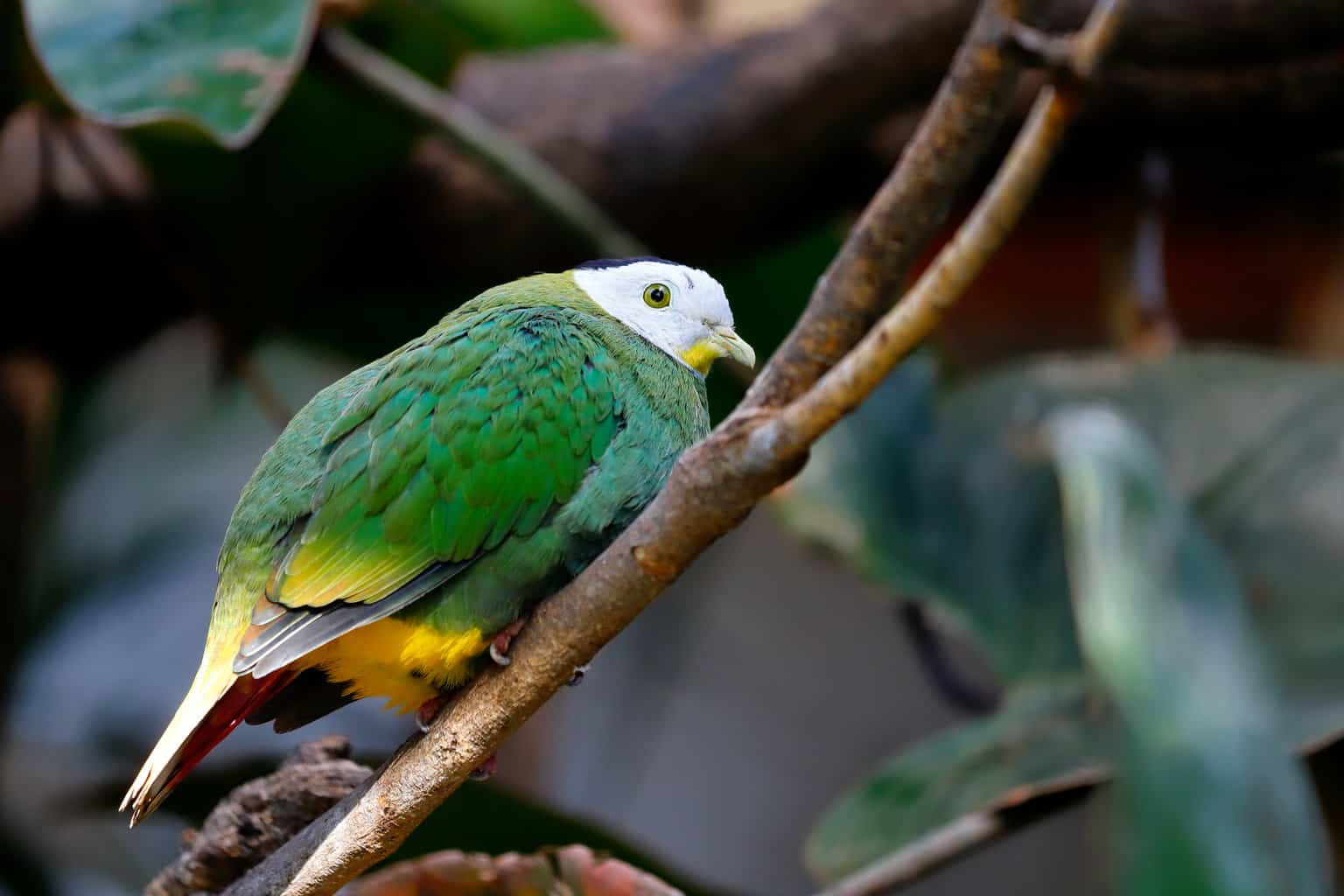
This is another vibrantly colored bird! It doesn’t look like a rock pigeon in its coloration, but it does have a similar body shape.
The male Black-napped fruit dove has a black neck, yellow throat, a light gray head, and a face. Under his tail, he is yellow and pink. The female is all-green.
Although they only live in a small region of the world, they are plentiful there and are not currently endangered or threatened. They can be found in Indonesia, the Philippines, and Malaysia.
Brown Cuckoo-Dove
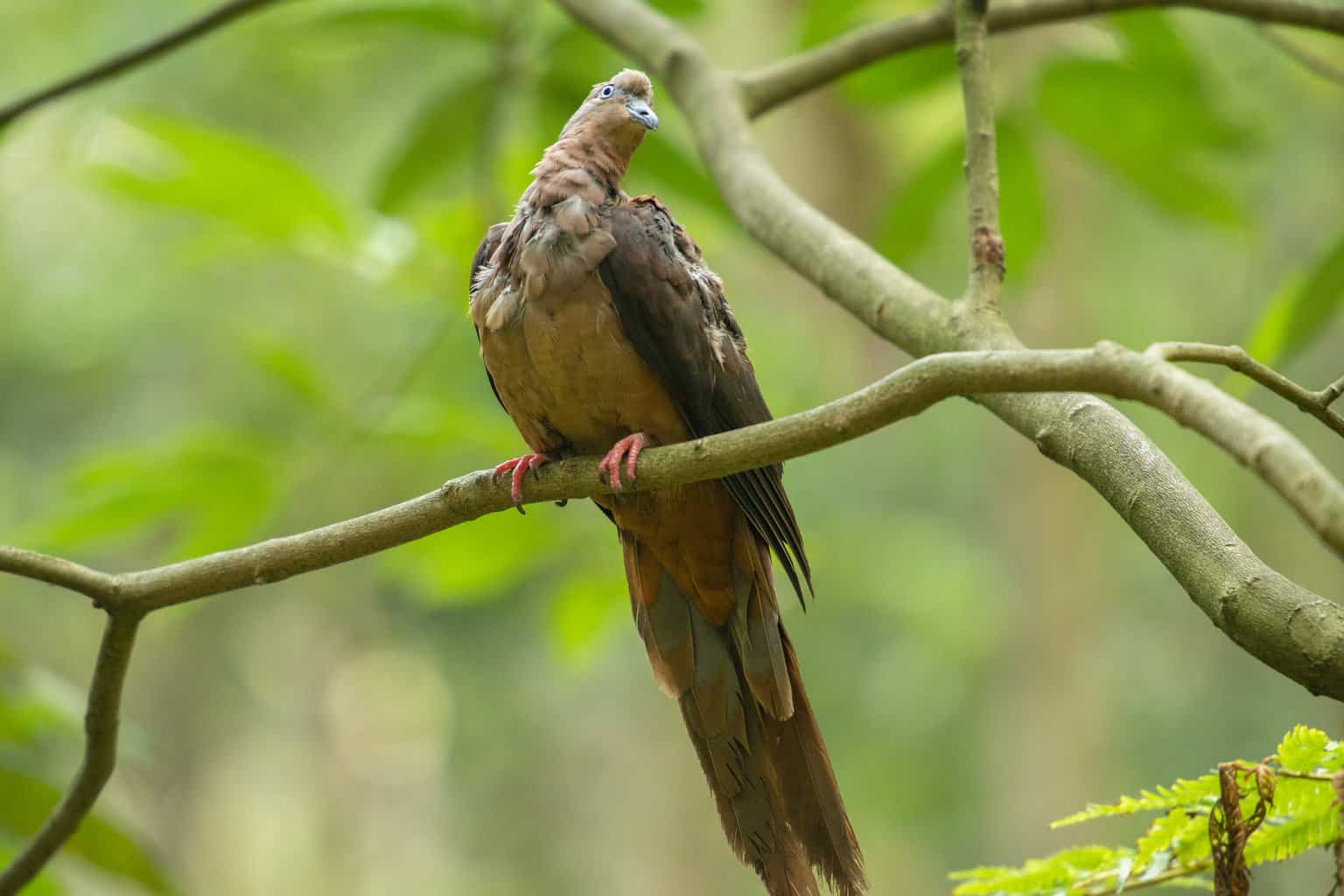
The brown cuckoo-dove is relatively large for a dove or pigeon. With brown feathers, it’s not a very flashy bird, but it boasts a long, attention-grabbing tail that can fan out in a display.
Males can be differentiated from females by their green and red iridescent feathers. Females are rich but dull brown.
The eastern coast of Australia is full of these birds, categorized as being of “least concern,” meaning they are not vulnerable to extinction.
Brown cuckoo-doves eat seeds and fruit and live in rainforests. The rainforests allow them to hide easily, but you can still hear their recognizable “cuckoo” song.
Caribbean Dove
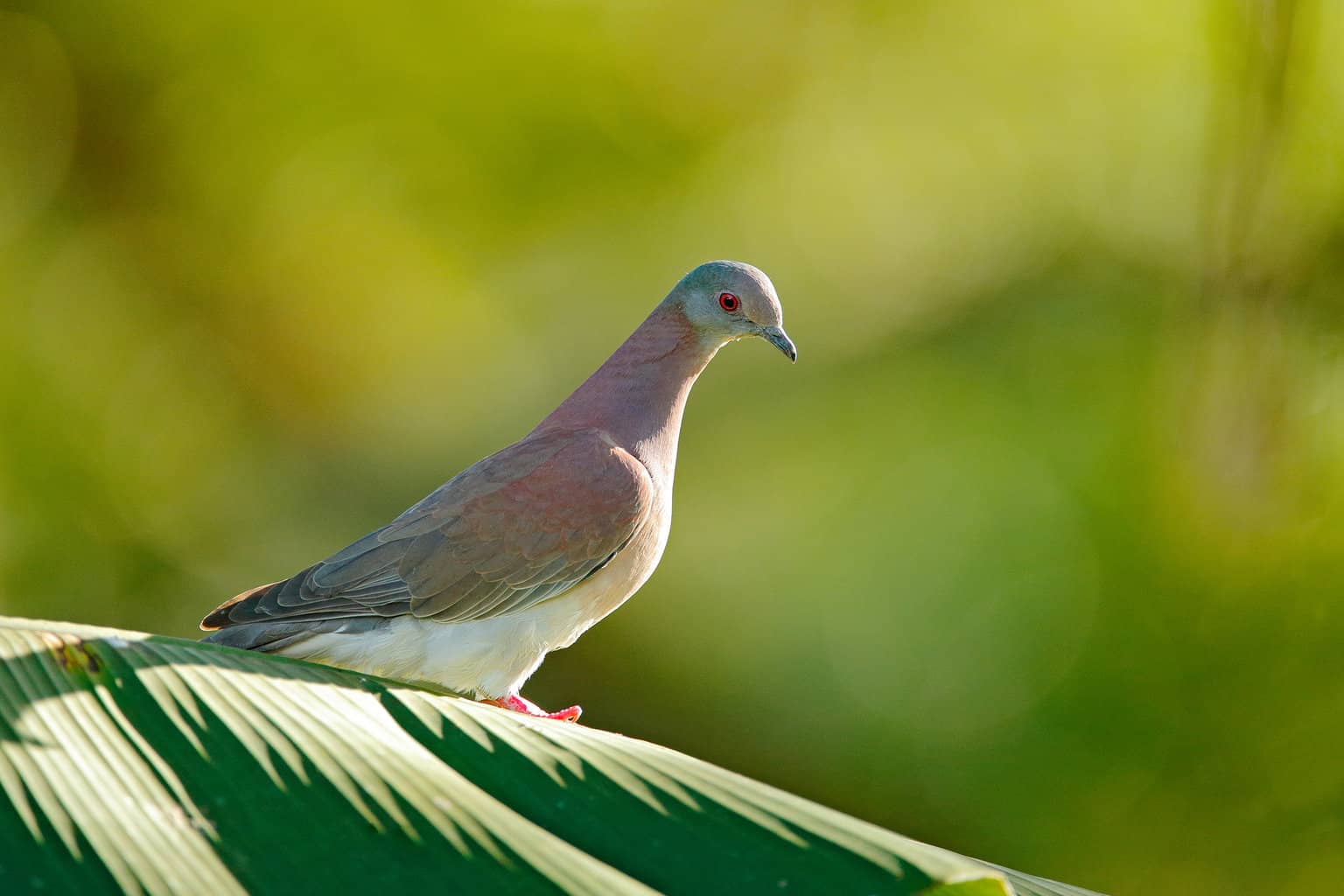
The Caribbean dove gets its name from where it makes its home: on the islands and coasts of the Caribbean Sea, including the Yucatan Peninsula.
It looks very similar to the White-tipped dove, which also lives in the same region. The Caribbean dove has a white face, a pale blue top of the head, and iridescent blue, pink, and yellow coloring on its nape. Its legs are pale to bright red.
Caribbean doves are foragers who eat seeds, fruits, and even small snails.
Cinnamon Ground Dove
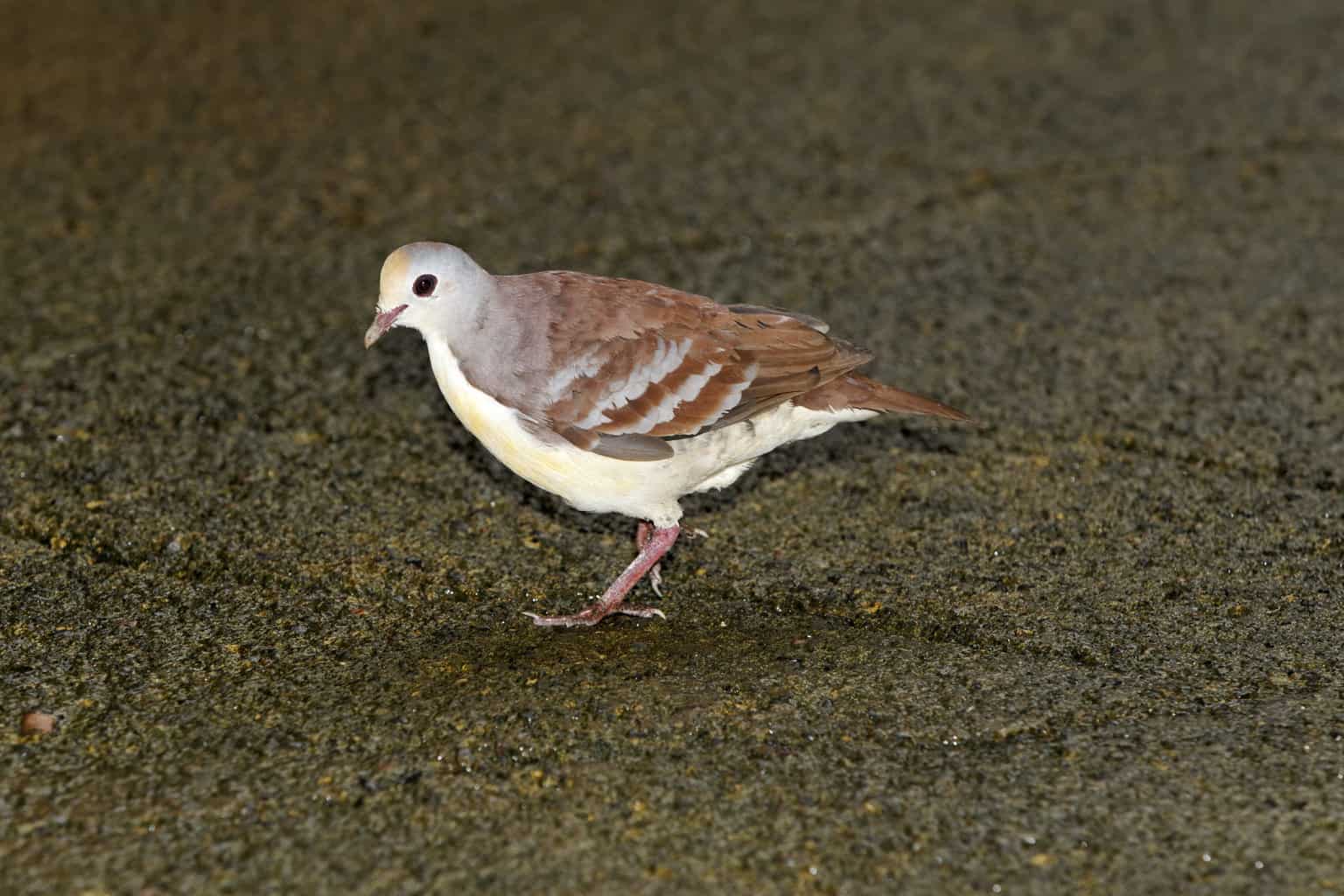
The cinnamon ground dove has a cute colloquial name: the golden heart dove. Their wings are reddish-brown and barred in grayish-blue. The yellow-orange on its chest is traced gently in white.
All ground doves spend most of their time foraging on the ground for berries, seeds, insects, and worms.
Common ground doves sound like Eastern Screech-Owls when they call. Like the beautiful fruit dove, it is found in Papua New Guinea.
Crested Quail-Dove
The crested quail-dove has a short crest on the back of its head, which is really only noticeable when you see the bird’s profile.
The male’s forehead is black, with a gray face and a light brown top of the head. His coloration changes from head to toe: he has a grey chest and belly, brown flanks, and a multi-colored back.
His upper back is purplish-red, his mid-back is blueish-purple, and his lower back is iridescent green and purple.
The female crested quail-dove’s colors are similar in pattern but paler.
These birds live in the forested mountains and foothills of Jamaica. Because their habitat has been claimed for human development, the crested quail dove is considered near-threatened.
Diamond Dove
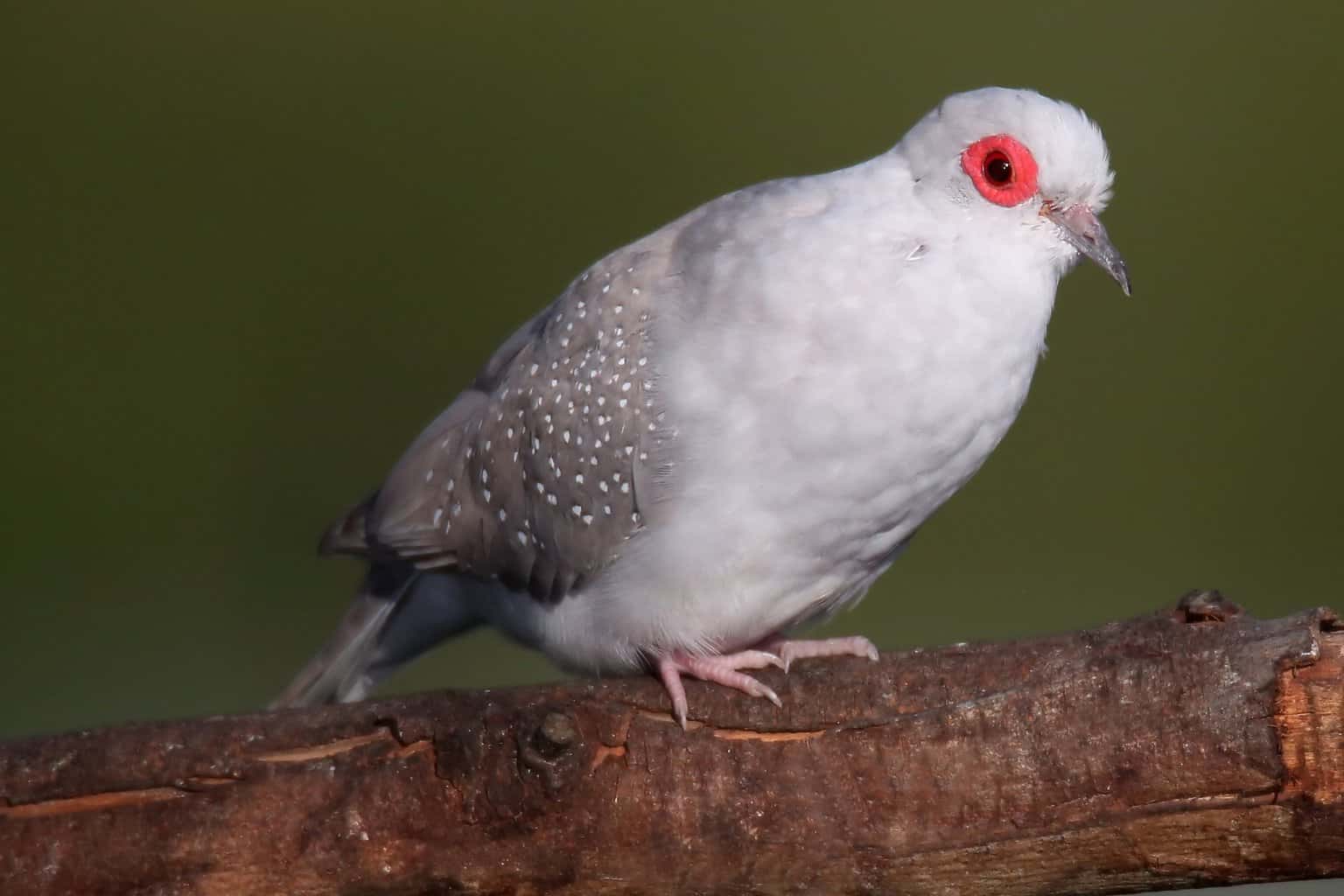
The diamond dove is plentiful across Australia but is available in many countries as a domesticated pet bird. They are only 9-11 inches long, making them one of the smallest pigeons in Australia.
Both males and females have white spots, edged in black, on their grey wings. Most of their body is slightly darker grey than the head and chest. Males have an exposed, reddish-orange eye ring, and females have a lighter brown eye ring.
They are known for thriving in extreme heat and live in arid climates. They are ground birds, eating seeds, grasses, and sometimes ants. They build their fragile nests in grassy areas.
Eurasian Collared-Dove
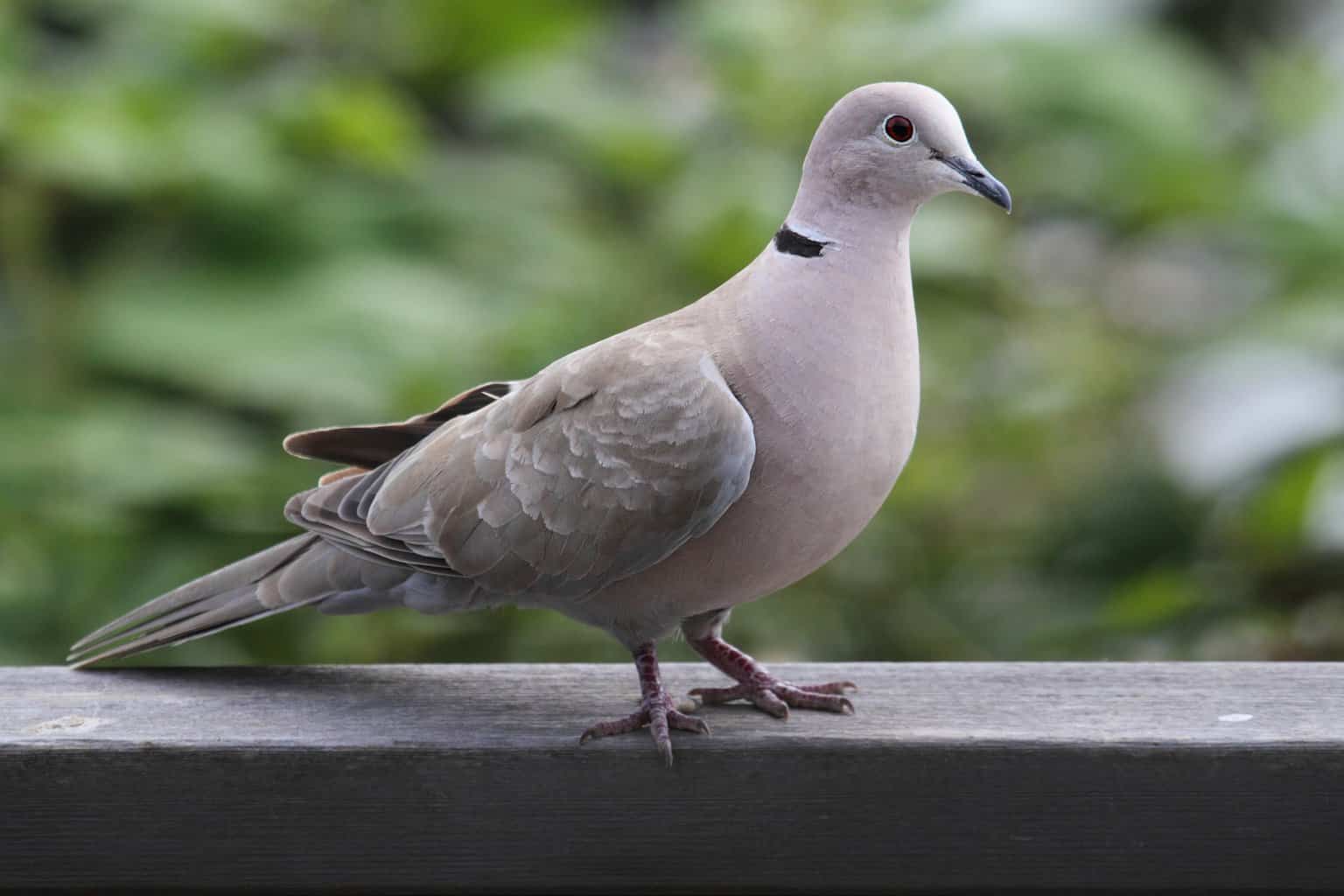
The Eurasian collared dove is large but smaller than a rock pigeon.
This bird is one of the larger doves, but it’s still smaller than a rock pigeon. It is pale gray and has a long tail that is square at the tip.
The “collar” from which it gets its name is only across the back of the neck, not around the entire neck.
They have a large territory, and you can find Eurasian collared doves throughout Eurasia and northern Africa, North America, Central America, and the Caribbean islands.
European Turtle Dove
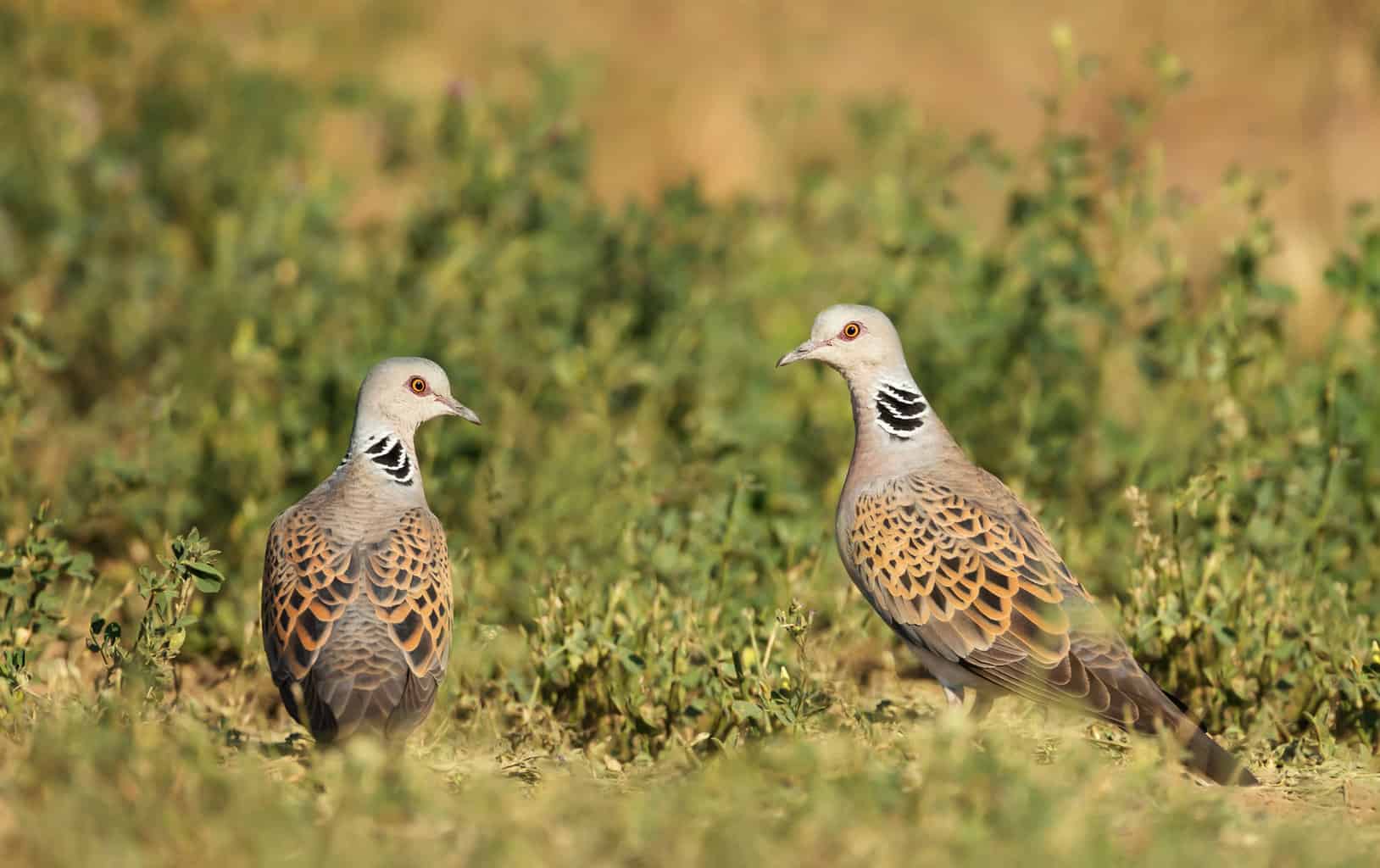
The European turtle dove’s patterned wings are stunning, especially compared to plainer doves and pigeons. Females and males both have this gorgeous spotting, but males have more contrast between black and brown. Females are pale.
They have a striped patch on the sides of their necks and a white-tipped tail.
The European turtle dove is migratory. It migrates to Northern Europe by April and goes south for the winter in September. It can be found throughout Europe and the Middle East.
Grenada Dove
These Grenada doves can only be found in Granada, an island nation off the coast of Venezuela. They are the country’s national bird. There, they live in dry woodlands and forage on the ground.
Unfortunately, they are critically endangered. In fact, they are one of the most endangered birds in the world! Previous estimates have suggested fewer than 100 Grenada doves may be left in the wild.
They are plainly colored, with a white chest and belly and a brown back and nape. It has minimal markings.
Grey-Headed Dove
Like many other doves, the Grey-headed dove is more likely to be detected by its song than by sight. It lives in Mexico and Central America and is frequently spotted on roadsides, trails, and sidewalks.
Males have a grey forehead that contrasts with the darker crown and neck and a pinkish face. Females and males look a lot alike.
When startled, these doves fly suddenly into the trees to hide.
Inca Dove
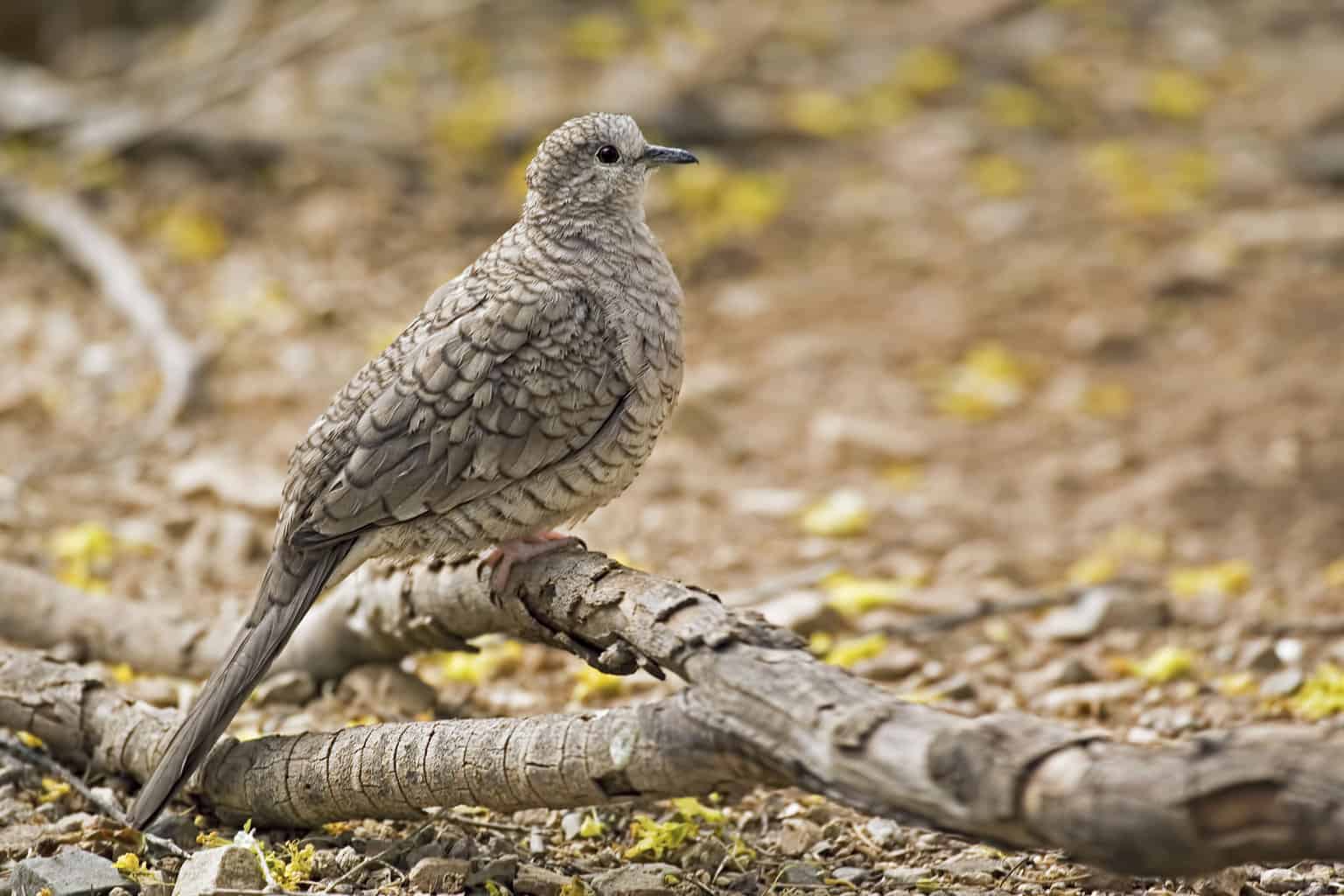
The Inca dove can be found throughout much of the United States, but they are especially populous in Mexico and Central America.
They have a scaled design on their sandy-colored bodies and white tail feathers. When they fly, the underside of their wings is rufous brown.
They prefer deserts, but they can also be found in parks and neighborhoods. A really interesting fact about the Inca dove is that the sound of its wings as it takes off in flight is similar to that of a rattlesnake!
Key West Quail-Dove
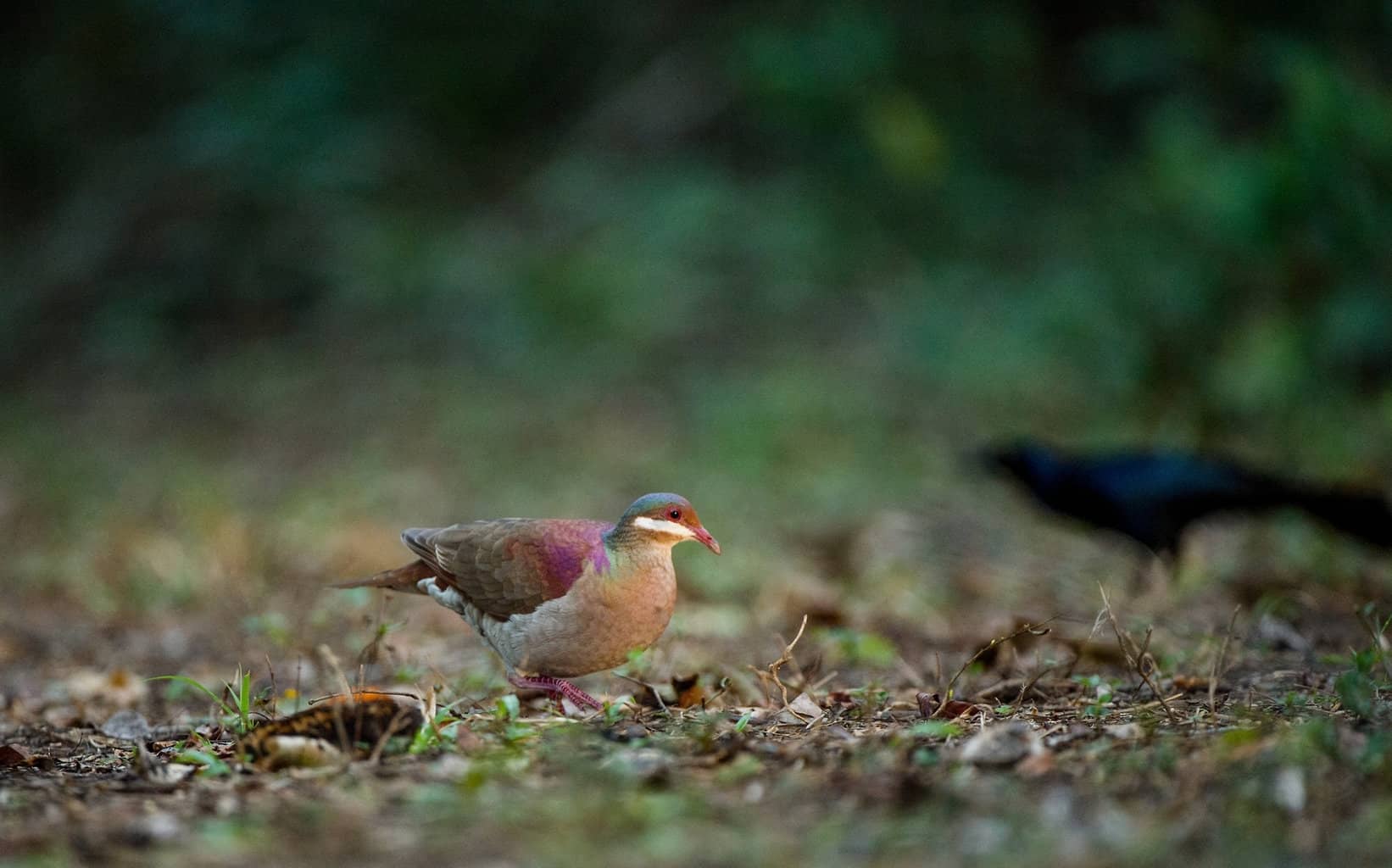
As you can probably guess from the name, you may find the Key West quail-dove in Key West, Florida–but only rarely. They are also in Puerto Rico, Cuba, and the Bahamas.
They are ground-dwelling doves who stick to woodland habitats and shrubby forests where the ground is thick with plants and leaves. They have iridescent, pinkish-red backs and wing feathers, an iridescent green crown, and a duller grey chest and body.
Luzon Bleeding-Heart
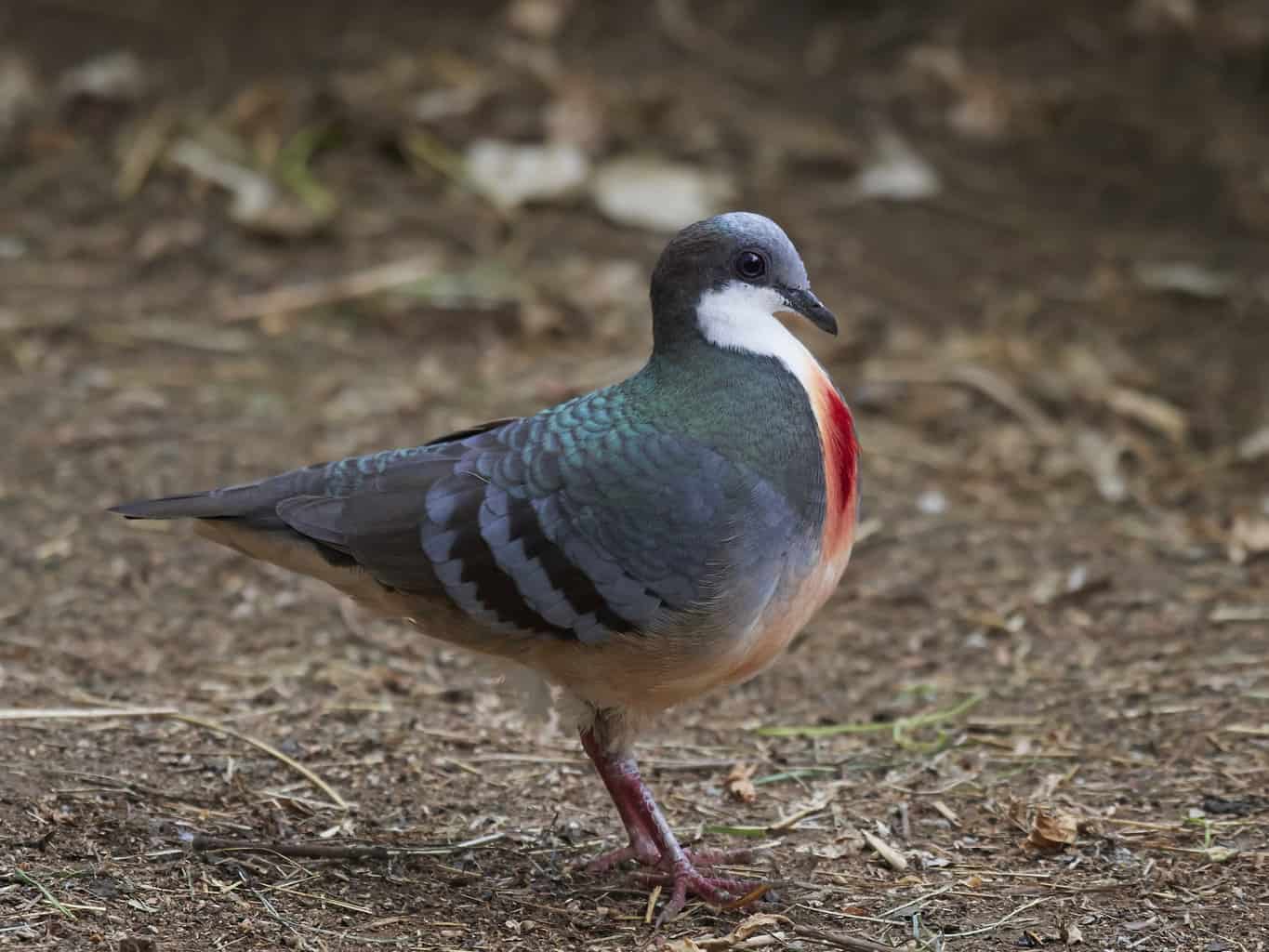
The Luzon bleeding heart is one of the easiest dove species to differ from all others, thanks to the “bleeding heart” on its chest.
Both males and females have this distinctive marking, although the heart shape on the female’s chest might not be as vibrant.
Found in Luzon in the Philippines, the Luzon bleeding heart is a ground-dwell dove that lives in mountainous regions. It is categorized as “near threatened,” and there are captive breeding programs in place to help protect the population from extinction.
Mourning Collared Dove
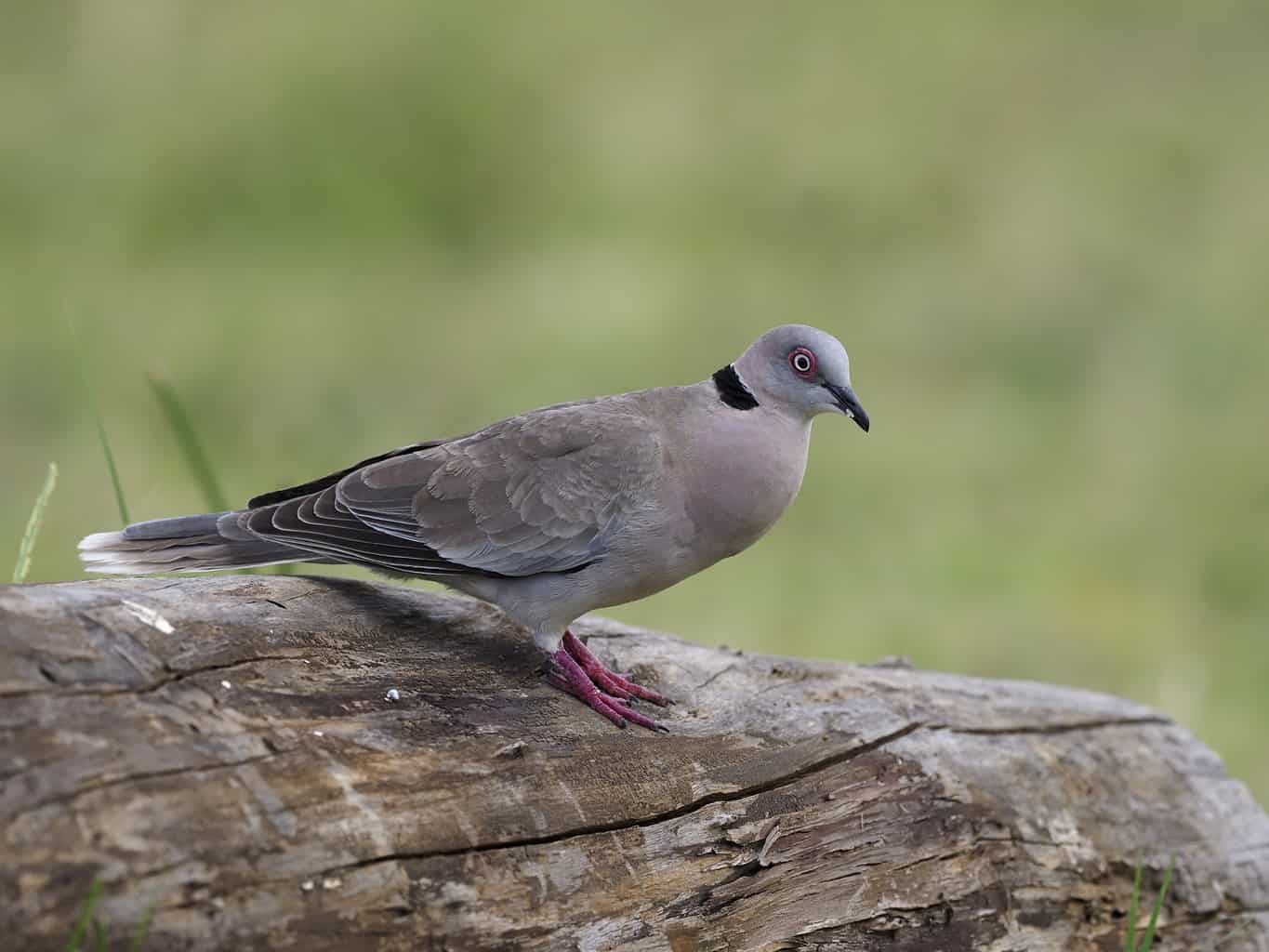
Mourning collared doves live in various habitats across central Africa, including savannas, woodlands, and urban communities with lots of human activity. They have a collar around the back of their neck, and the rest of the bird’s body is pale brownish-gray.
It is of no relation to the North American mourning dove, which is the next bird on our list!
Mourning Dove (AKA: Turtle Dove)

The mourning dove has many names: the American mourning dove, the rain dove, and the turtle dove. In the past, it was also called the Carolina pigeon or Carolina turtledove.
Mourning doves are one of the most populous birds in all of North America. They are popular game birds who breed multiple times throughout the year. Some mourning dove pairs will even raise six broods of hatchlings in a single year!
Unlike many doves that are ground-dwellers and only fly when frightened, mourning doves are excellent flyers. Their diet is made up almost entirely of seeds.
Mourning doves are tan or light brown. Their wings are spotted in black, and their white-tipped tail feathers are bordered in black.
Their migration habits vary significantly from bird to bird. Some mourning doves migrate a few hundred miles, while others migrate a few thousand! Others don’t migrate and spend the whole year in one spot.
Oriental Turtle Dove
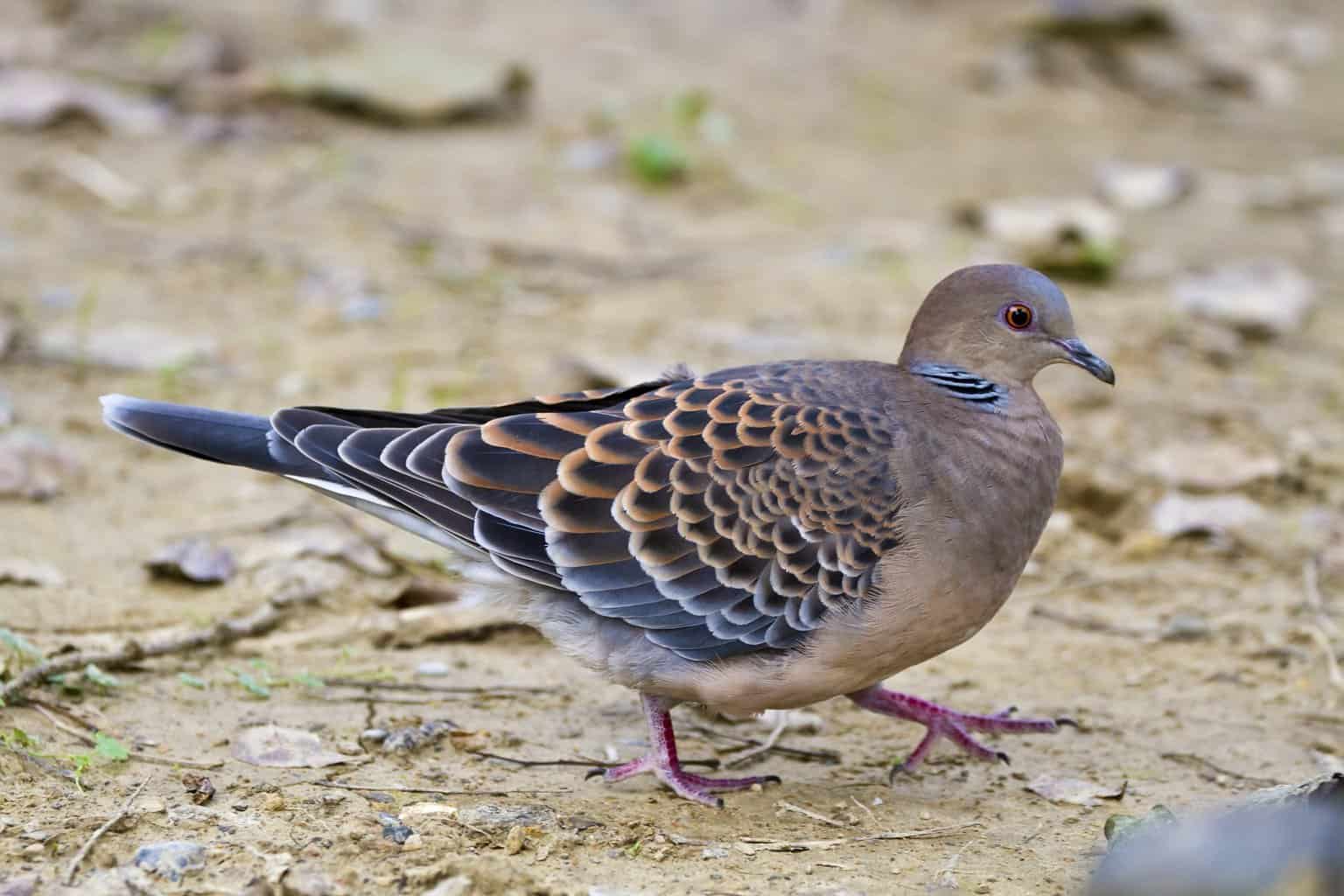
The oriental turtle dove is such a pretty little bird! Found throughout the Asian continent, it has a scaled pattern on its wings, which are also tipped in silver.
It is larger than the North American mourning dove/turtle dove, but they have a very similar appearance otherwise. The oriental turtle dove does not have the noticeable bare skin around the eyes that the North American turtle dove has.
Even though they can live in various habitats, they seem to prefer relatively open areas with access to good tree cover.
Ring-Necked Dove

This plain-looking dove has a black ringneck-style collar. The rest of the Ring-necked dove’s body is gray, with some iridescent sheen. The only discernable difference between males and females is that males are just a little bigger.
Ring-necked doves live in central, eastern, and southern Africa. They live in scrubby deserts, woodlands, farmlands, and areas rich with acacia plants.
They are, unfortunately, the frequent prey of predators in their habitats, including wildcats, reptiles, large birds of prey, and snakes.
Ruddy Ground-Dove
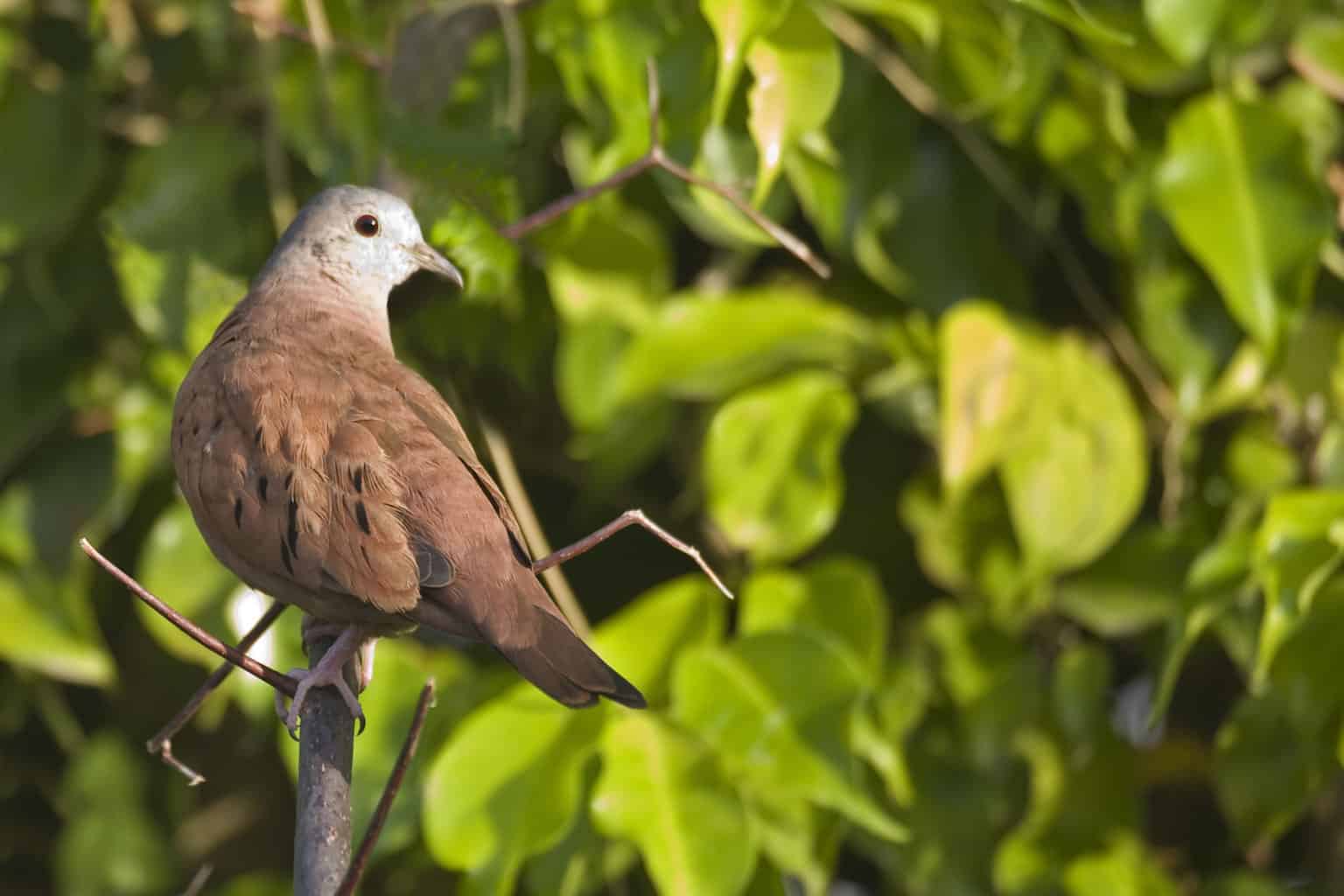
The ruddy ground dove lives throughout much of South America and may be found all the way into the southwestern US. They are classified as a bird of the least concern, meaning their population is healthy and thriving.
Its name is definitely accurate to its ruddy brown color! They have a noticeably short tails, unlike a bird like the Eurasian collared dove.
It also likes to live in large groups of up to 100 birds. The main staple of its diet is seeds, but it will sometimes eat insects.
Spotted Dove
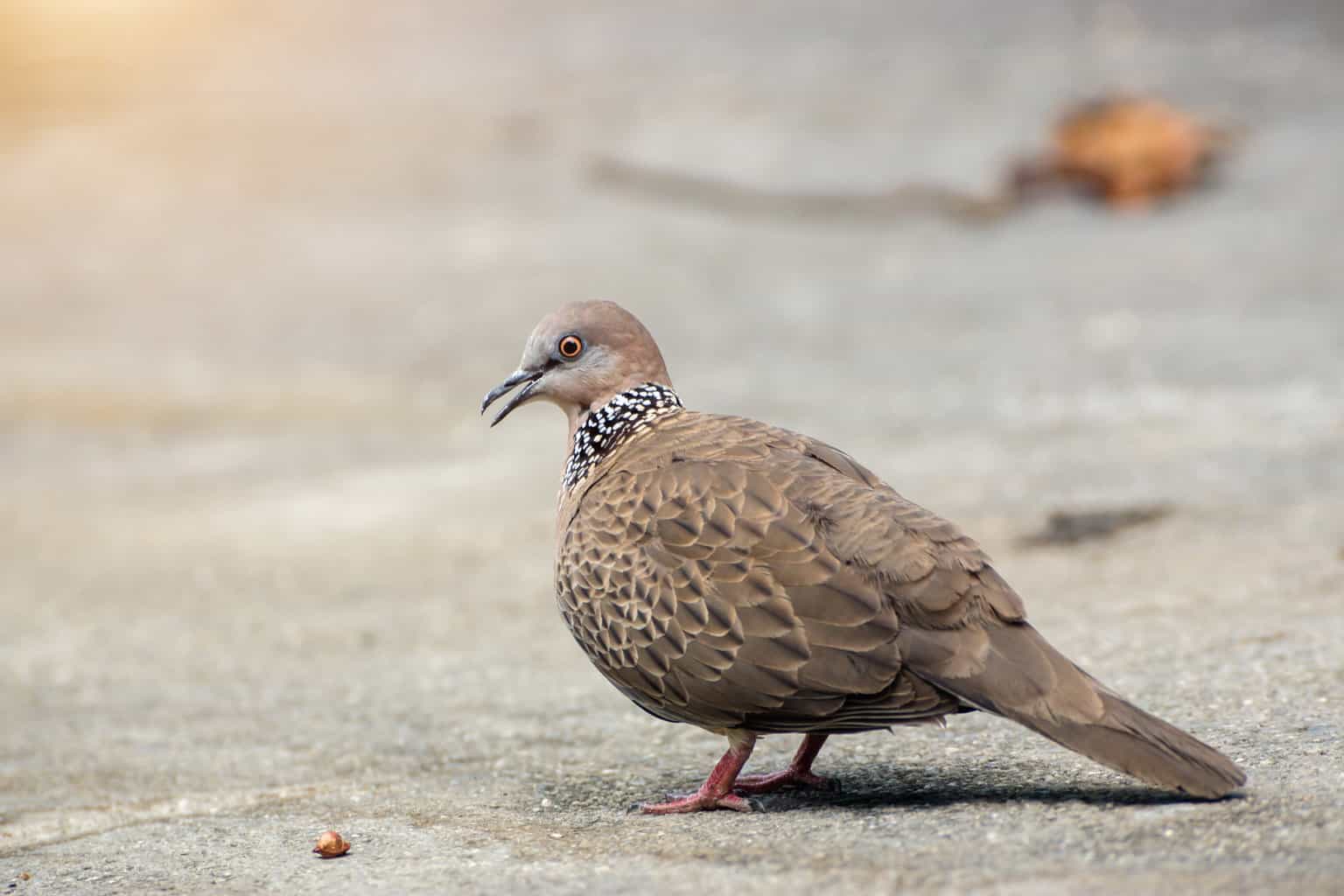
While spotted doves are originally from Asia, they were introduced to California in 1917 and have thrived there.
They have also done well in New Zealand, Australia, and Hawaii. They are still common in Southeast Asia and the Indian subcontinent.
They are pinkish-brown with grey heads and bellies. They also have a black half-collar on their neck. Spotted doves live most of their lives on the ground and inhabit woodlands, scrub areas, and farmland.
Like rock pigeons, they do well in urban areas and enjoy life in public community areas like parks, gardens, and city streets.
White-Crowned Pigeon
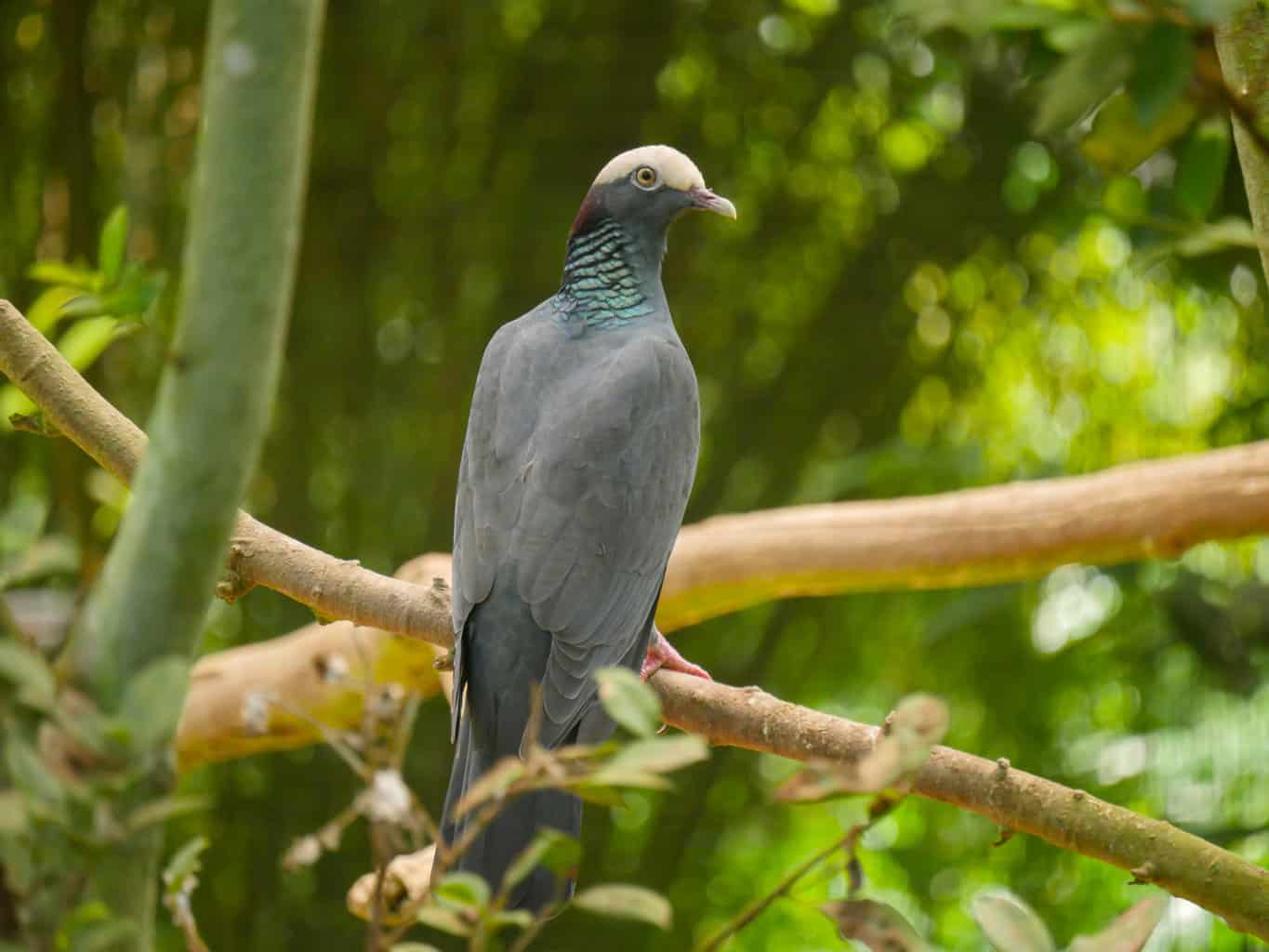
Native to the Caribbean, the white-crowned pigeon is a near-threatened species. These pigeons fly long distances between islands as they seek out mangrove forests, tropical fruits, and fig trees. On many days, they will fly up to 30 miles at once!
It’s pretty easy to recognize, too! The white-crowned pigeon has a very noticeable white patch on the top of its head and white bare skin around its eyes.
The rest of its body is dark greyish-black, allowing it to blend easily into the forests where it hides and feeds.
White-tipped Dove
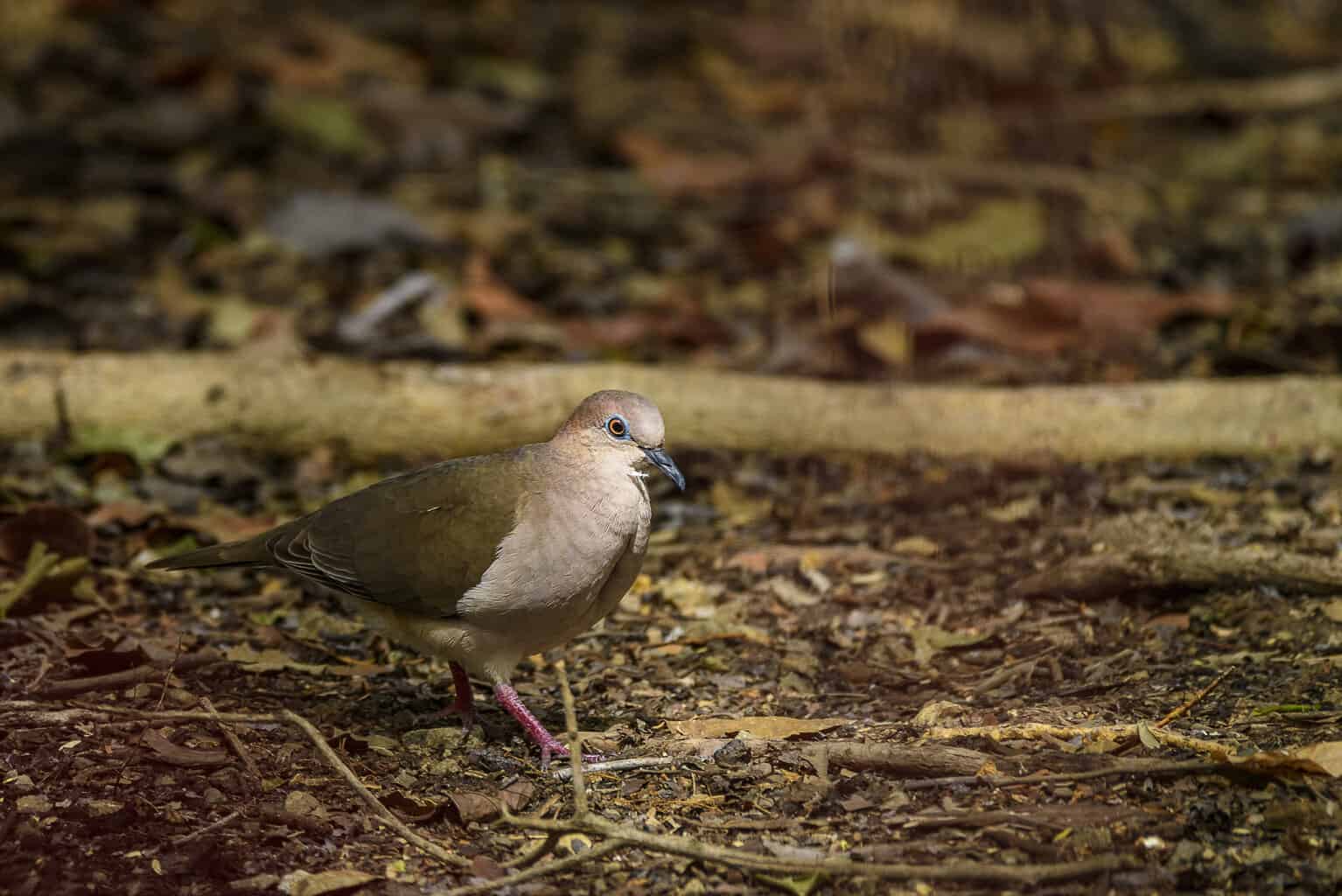
The white-tipped dove is brown in color but with a white forehead and chin. The tail also has whiteish tips, which can be seen when the dove is flying.
In some light, you will see an iridescent sheen to its feathers.
They live in thick brushy, and wooded areas. They like vines and easy access to water. Citrus farmers have found them living in their citrus groves, too.
These birds live in Brazil, parts of South America, Central America, and Mexico.
White-Winged Dove
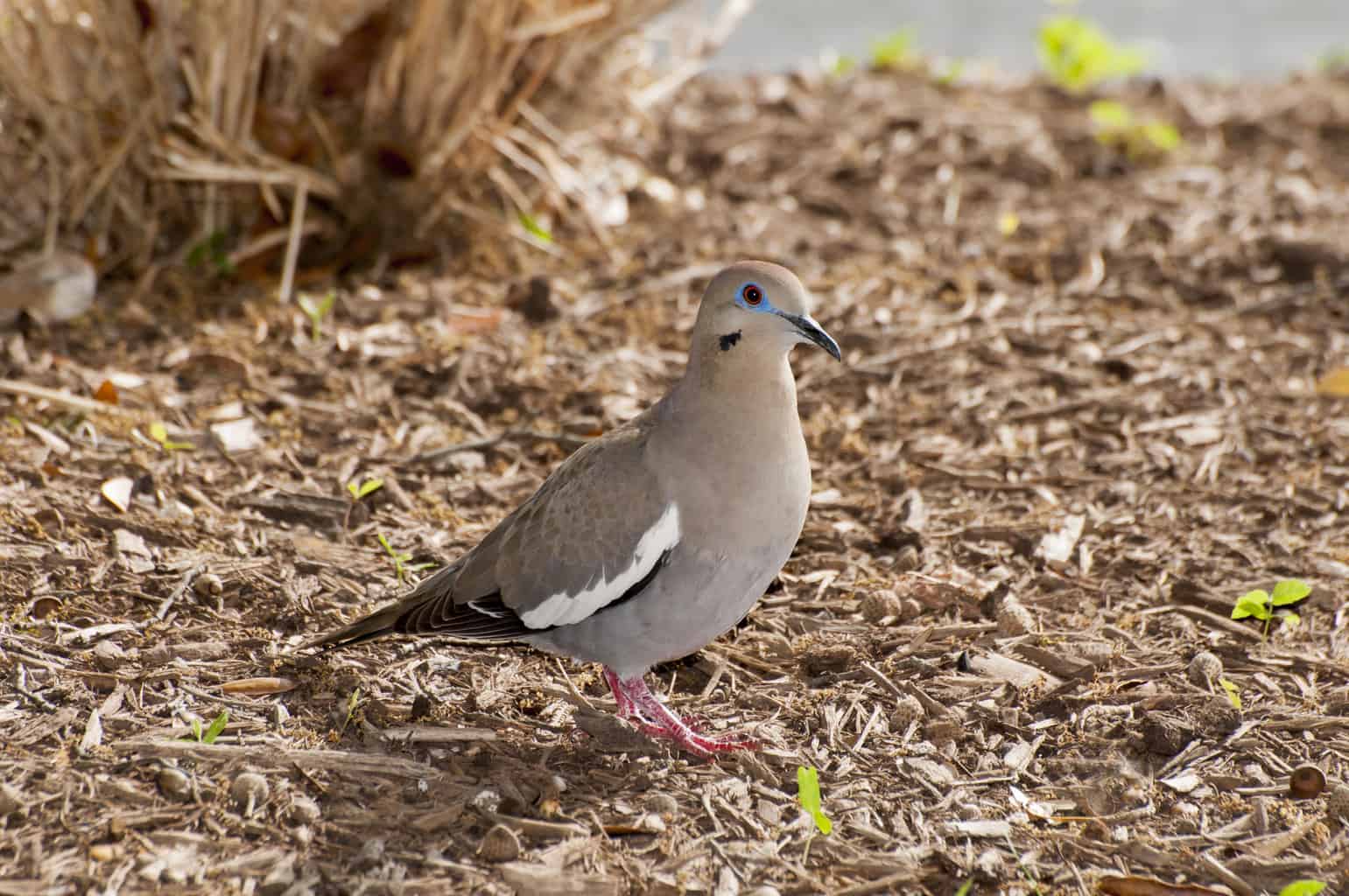
White-winged doves may look quite similar to rock pigeons to an unfamiliar birder. However, there are a few noteworthy differences: they have a dark black streak across their cheeks, light blue skin around their eyes, and light tips to their wings.
They are found in the Southwestern region o the US, Central America, Mexico, and the Caribbean islands.
They were once threatened by hunting and habitat loss, but they could successfully adapt to city life and rebound.
Zebra Dove
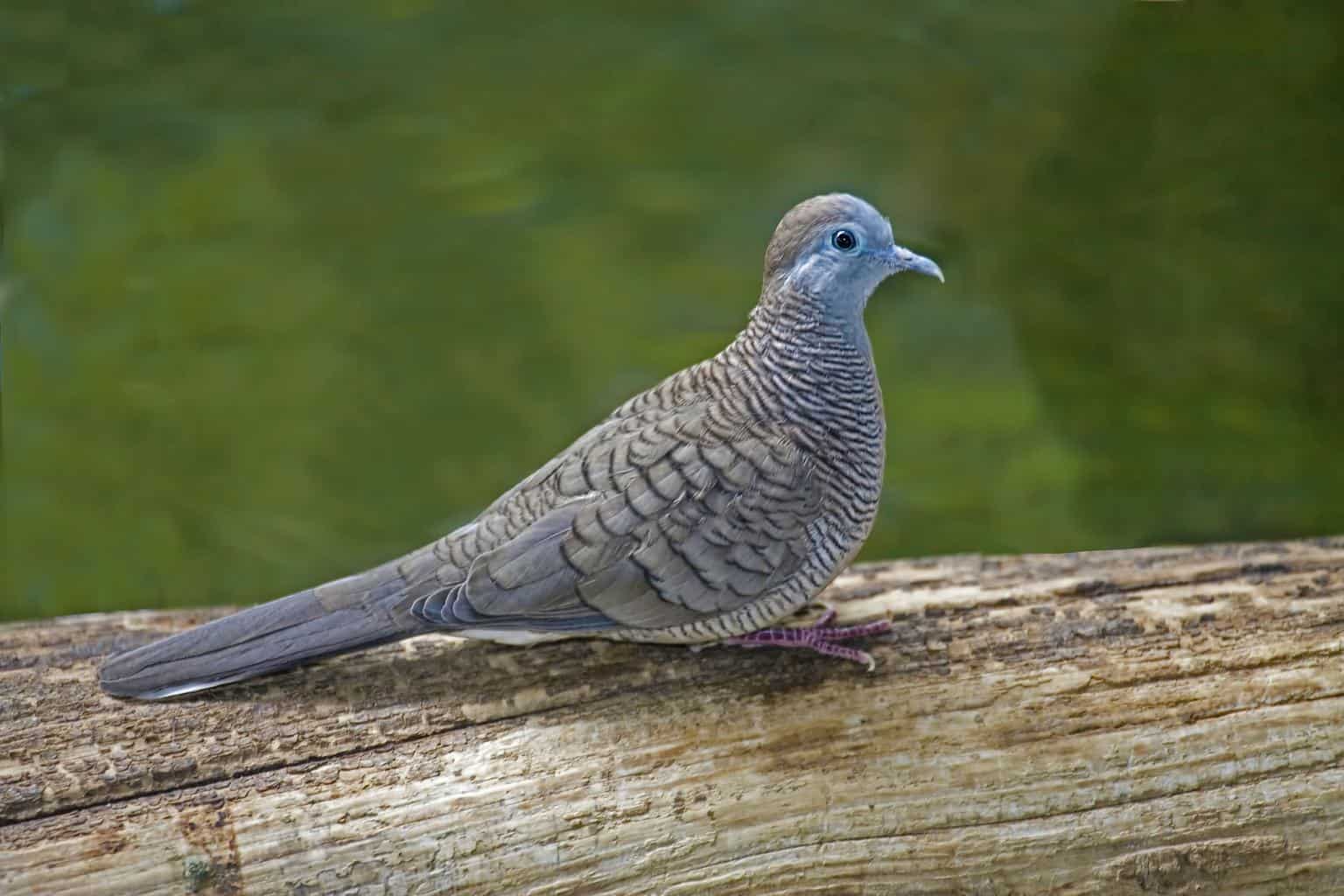
The zebra dove is one of the only striped doves on this list. They are light brown with dark brown bars or stripes across the wings, breasts, and back. The dove’s head is plain light brown.
They were originally native to southeast Asia and are common in Thailand, Malaysia, Singapore, and Indonesia.
They were taken to many other islands, where their populations have thrived. That includes Seychelles, Mauritius, Tahiti, Hawaii, Laos, Borneo, and more.
Because they are popular pets, trappers have targeted zebra doves. This has reduced their wild population in Indonesia, but they are still incredibly populous in most of the areas where they are found. They are among Hawaii’s most common birds!

